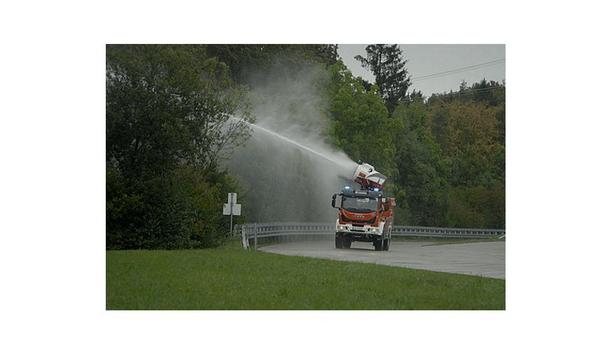The threat and consequences of fire in any building are serious, but historic structures pose a particularly complex challenge for the people and systems charged with protecting them. Not only do these buildings tend to be complex and varied in their design and construction, the contents will often include furnishings and artefacts of high monetary and historic value, the loss of which would be permanent and costly to the heritage.
Safeguarding the occupants, fabric and contents of these buildings is of paramount importance, especially where large numbers of staff and visitors are involved, such as in stately homes, museums or other historical attractions. An in-depth fire risk assessment needs to be carried out and, in the case of historic structures, normally needs to be supplemented with a more in-depth fire safety management plan, in line with UL or EN guidelines.
passive protection measures
At the center of any active system is the fire panel - single or multi-loop, standalone or networked
The assessment should cover important factors such as active and passive protection measures (both in place and required), mitigation of identified risks, staff training, maintenance and review periods. At the center of any active system is the fire panel - single or multi-loop, standalone or networked. The choice available is wide, but not simple, and the installation costs are likely to dwarf equipment prices.
For this reason, finding a system that is easily installed with flexible cabling and a range of communication options should be the priority. Given the complexity of the sites an analogue addressable system that provides more control and scalability is often preferred. A vital consideration with historic sites is the extent to which they allow one to subdivide and control the fire system and its outputs before, during and after a fire condition.
Alarm Receiving Centers
The fire system should offer multiple cause and effect options to accommodate the wide range of uses, room sizes, layouts, spaces and technical challenges found in such buildings. Heritage buildings are often in remote locations with difficult access, and are more likely to be connected to Alarm Receiving Centers. If an unreliable or inappropriate system is installed, the downstream costs of fault-finding, repair and maintenance will be significant.
A recurring challenge is to make the system as unobtrusive as possible without impacting performance. Thanks to repeater panels, the larger fire panel can be hidden from view. Some new repeater panels such as Advanced’s TouchControl touchscreen are designed to suit many locations, to flush fit and can add new performance features such as in TouchControl’s digital zone plans and active maps showing fire status throughout a site.
active fire system
An alternative is bespoke cabinets and housings, which can be tailored to fit seamlessly into almost any decorative scheme or hard -to-access space. Multiple factors can impact the challenges facing an active fire system, and these are often aggravated in historic structures. Irregular room geometry, large windows, archways, open fireplaces and high, suspended or decorative ceilings can create detection challenges.
The standards for detector placement are dictated by BS 5839, UL 268 and EN 54 respectively
The standards for detector placement are dictated by BS 5839, UL 268 and EN 54 respectively, which also give detailed guidance on the options for different detection types in unusual spaces. Extreme care must be taken to ensure that smoke can reach detectors, and it is also important to place detectors in such a way that smoke does not stratify beneath the detecting element or otherwise delay the efficient detection of smoke, again BS 5839, UL 268 and EN54 will provide guidance.
optical smoke detector
Different materials will dictate the likely speed and spread of fire in an old building, so detection choice and associated system programming covering the spectrum of operations from alarm confirmation and alert methods to evacuation strategies and integration with third party systems is crucial. There are many detection methods suitable for historic structures and it’s common to find many of them on a single system.
Modern analog addressable point detectors are hugely reliable and increasingly sophisticated. The most common type is the optical smoke detector with many options available with different detection and analysis methods used.
fitting cable systems
Heat detectors are common in spaces such as kitchens where steam and cooking smoke are present, and multi-sensor detectors are often used as they combine heat and smoke detection in a single unit which can be used as general detection with real advantages for signal confirmation.
Wireless solutions not only mean lower visual and physical impact, they are also faster and cheaper to install
Many points can have sounder and strobe options added or have them ‘on-board’ the device and more exotic detection modes such as CO are coming to market and are already specified for certain uses in some standards regimes. Floors and ceilings in older structures are often wooden, so fitting cable systems to approved standards without suspended steel trays can be a challenge.
wireless point detectors
A much less invasive solution uses wireless point detectors, that also come with most of the detection and technology options of their wired counterparts. Wireless solutions not only mean lower visual and physical impact, they are also faster and cheaper to install. Thanks to two-way communication with the panel, battery replacement and fault reporting can be worked into the on-going maintenance schedule via the panel service tools, and they are increasingly popular.
Where rapid warning is vital such as a gallery space or archive store, aspirating detectors offer a highly effective solution. These continually sample the air, several times a second, and can be set at various sensitivity levels. Although the associated pipework can be bulky and hard to conceal, they are a widely used option when located in less prominent, hard to access spaces such as cellars, service areas and attics.
CCD driven flame detectors
As point detectors are unsuitable for ceiling heights over 10.5 meters, due to the way smoke dissipates in taller spaces, beam detectors can be used in larger rooms, such as great halls or chapels. They function on the basis of smoke obscuration of a beam of light.
A further option is video and CCD driven flame detectors, a technology that has developed rapidly in recent years
The need for a reflector or detector on the other side of the room can make them sensitive to movement, particularly in timber-framed structures, but some of the better beams self-align, minimizing the effects of building movement and making installation simpler. A further option is video and CCD driven flame detectors, a technology that has developed rapidly in recent years.
multiple detector types
Although flames will often, although not always, be detected after smoke, these are useful devices where quickly visible flame fires are more likely. A final detector option, especially suited to sensitive installations is linear-heat or heat-sensing cable, which can be run through any area. Even tiny changes in temperature cause the conducting cables to short, pinpointing the location and alerting the fire system.
Another key to effective fire safety is to ensure that critical or high risk areas, such as kitchens, boiler rooms or gallery spaces, are specified for a higher level of detection, using single or multiple detector types, so that incidents are confirmed as quickly as possible and action can be taken without any delay. Fires can spread very quickly in historic structures, so measures to allow quick extinguishing via sprinklers, water mist or, for high priority areas, suppressant gas or foam should be considered.
false alarm management programming
The contents of an area may make this difficult and the speed of detection and alert on the fire system may need to be a prime consideration. Some modern systems can react much faster and this may need to be a key consideration. Escape routes longer than normally permitted are a frequent problem in historic properties, especially where they have a residential use, e.g. as hotels or apartments.
Some fire systems, such as Advanced’s have sophisticated false alarm management programming built in
As such avoiding unnecessary evacuations and helping ensure efficient egress are important functions of the fire system. In many situations, human intervention is crucial to avoid false alarm incidents. Some fire systems, such as Advanced’s have sophisticated false alarm management programming built in.
fire system industry
This can radically reduce false alerts and evacuations, by configuring automatic pre-programed verification methods and investigation delays, or by allowing trained residents or occupants to verify signals in their local area (eg. apartment) are false. Failsafes are vital and must be part of the default system.
In conclusion, historic structures have always presented a unique challenge for the fire system industry but innovation is delivering more choice and performance for end users, specifiers and responsible people in the sector. The choices made need to be based on a thorough understanding of the technology and standards present within the context of a particular site.















